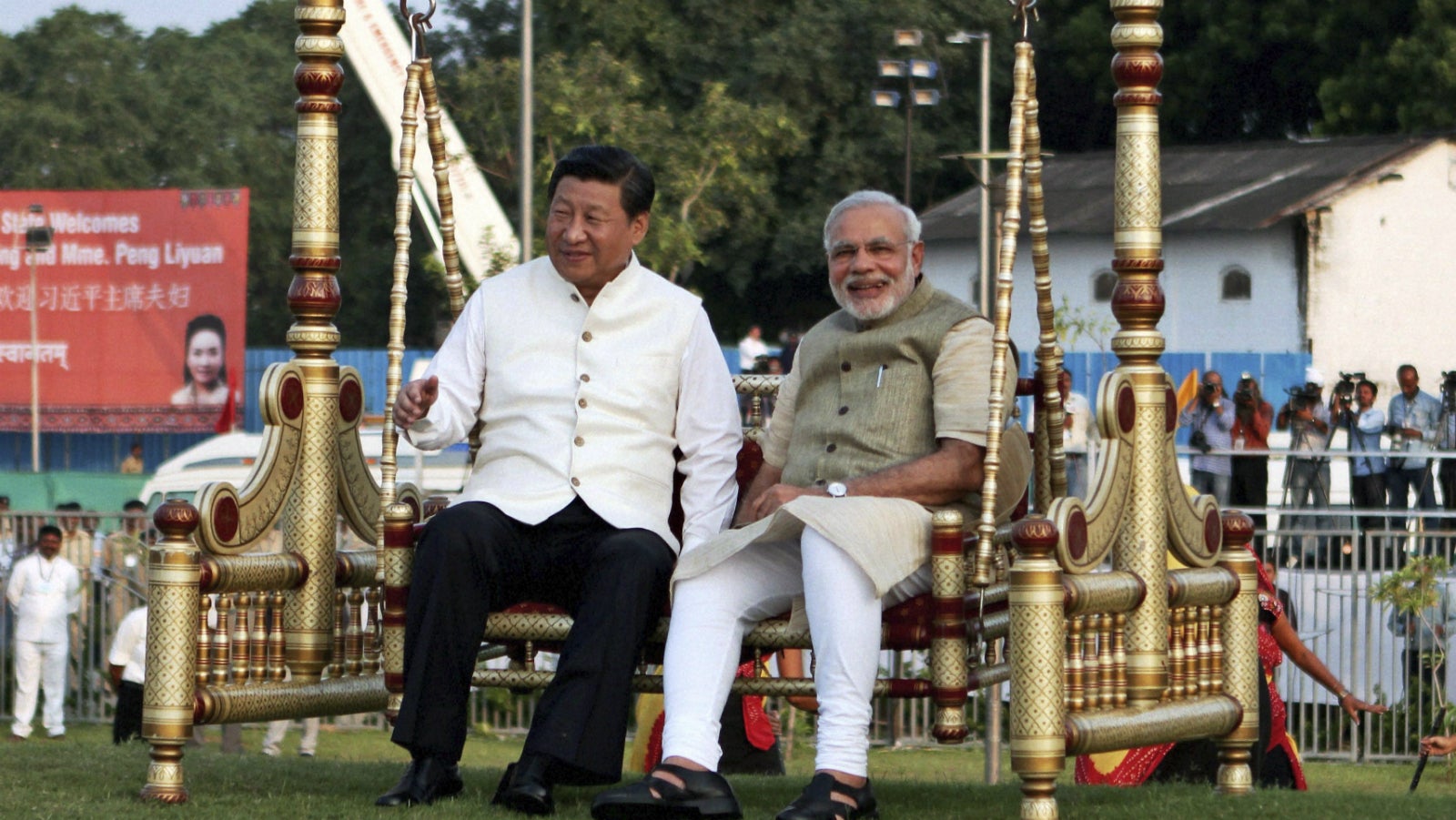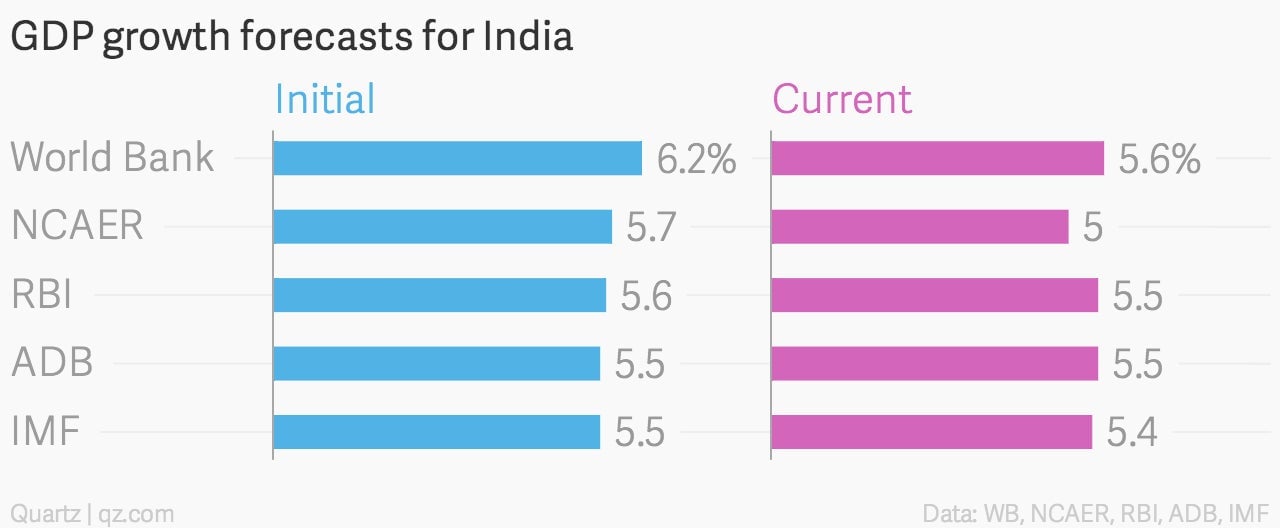So about that Indian GDP growth beating the pants off China…
The World Bank and the International Monetary Fund (IMF) have rarely been so popular in India.


The World Bank and the International Monetary Fund (IMF) have rarely been so popular in India.
A few days after the former predicted that India would match China’s economic growth rate by 2016 or 2017, the IMF on Jan. 20 announced a similar projection (pdf). By the latter’s estimate, India’s GDP growth would actually outstrip that of China by next year.
But none of this is happening because India’s economy is slated to expand expeditiously.
In fact, India’s estimated growth projection for 2015 has been actually lowered by the IMF, from 6.4% in last October to 6.3% currently. And despite all the talk of reform and revival in recent months, the growth forecast for 2016 has remained unchanged.
Instead, it is China’s slowing growth that’s making India look better.
India’s neighbour is seeing a near quarter-century low—from 7.7% in 2013 to 7.4% in 2014—in its economic expansion. Accordingly, the IMF cut the growth projection for China by as much as 0.3 percentage points in 2015 and 0.5 percentage points in 2016. China’s GDP projections now stand at 6.8% in 2015 and 6.3% in 2016.
Although the Chinese government has chosen to describe the slowdown as the “new normal of stable growth”, the country’s once booming construction and real estate sector have slumped and industrial expansion has slowed down.
That the economic situation isn’t much better elsewhere hasn’t helped either.
Except for the US, growth projections for all other major economies, including Russia and Brazil, were lowered by the IMF. That’s because the sharp fall in oil prices will be ”offset by negative factors, including investment weakness as adjustment to diminished expectations about medium-term growth continues in many advanced and emerging market economies.”
But India’s case is different—and much rides on the promise of reforms made by prime minister Narendra Modi’s government.
“In India, the growth forecast is broadly unchanged, however, as weaker external demand is offset by the boost to the terms of trade from lower oil prices and a pickup in industrial and investment activity after policy reforms,” the IMF said in its report.
Last week, the World Bank also said the same thing.
“The implementation of reforms and deregulation in India should lift FDI. Investment, which accounts for about 30% of GDP, should strengthen, and help raise growth to 7% by 2016, although this is contingent on strong and sustained progress on reforms,” said the bank’s Global Economic Prospects report (pdf).
But, India doesn’t exactly have the best track record of living up to expectations. In 2014, almost every major global and national forecaster—including the World Bank and the IMF—slashed their initial projections by the end of the year as a result of slow industrial growth and lackluster monsoons.

Time to temper the excitement, and get back to work.